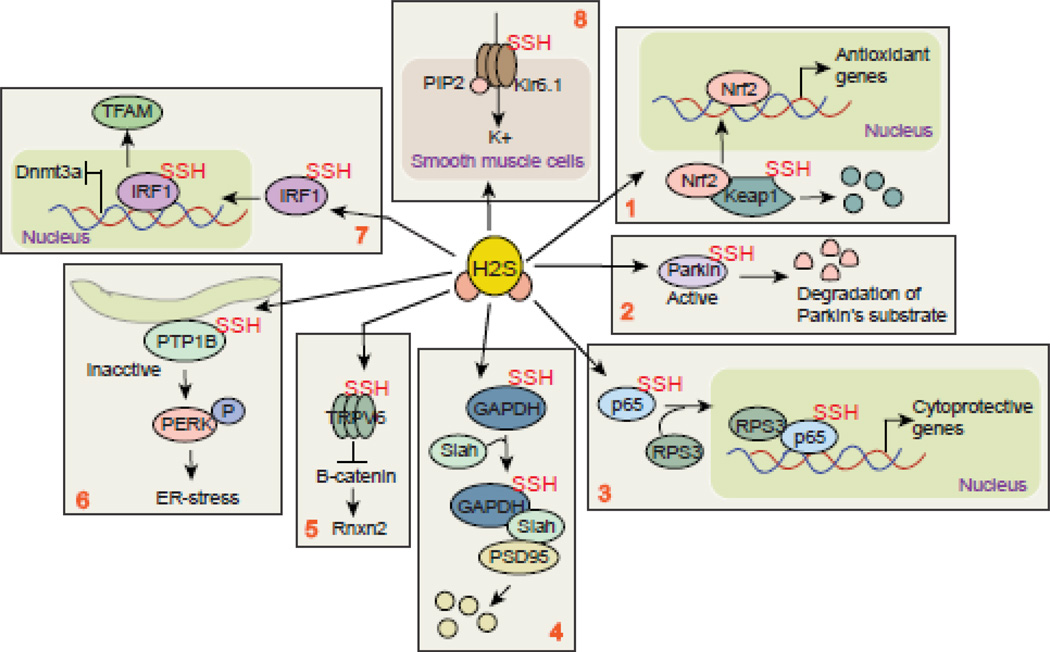Figure 3.
Sulfhydration of proteins in general. Box 1: Sulfhydration of Keap1 leads Nrf2 to translocate to the nucleus and synthesize antioxidant genes. Box 2: sulfhydration of a E3 ligase, Parkin protein leads to degradation of its substrates and provides neuroprotection. Box 3: sulfhydration of p65 (NFkB) stimulates its transcriptional activation after its interaction with RPS3 protein. Box 4: sulfhydration of GAPDH leads to degradation of PSD95 after its interaction with a E3 ligase Siah protein. This event leads to memmory imapirment following an induction of a proinflammatory cytokine, IL-1β. Box 5: sulfhydration of a channel protein TRPV6 regulates maintenace of stem cell function via modulating β-catenin inside cells. Box 6: Sulfhydration of PTP1B induces PERK phopshorylation and triggers ER stress which has been implicated in several neurodegenerative diseases. Box 7: Sulfhydration of IRF1 serves as a transcriptional suppressor and facilititates the transcriptional activation of TFAM which is impaortant for mitochondrial DNA compaction.

